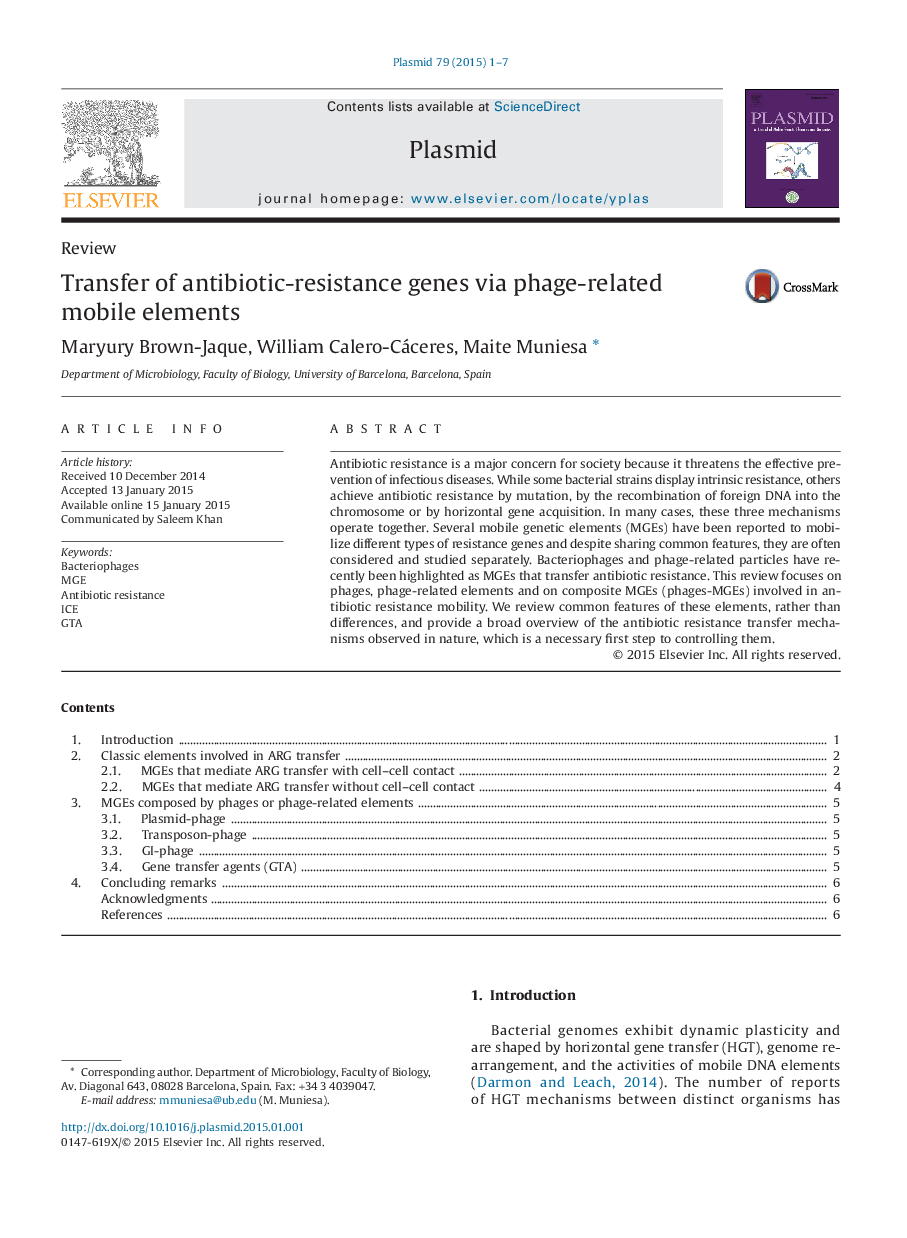| کد مقاله | کد نشریه | سال انتشار | مقاله انگلیسی | نسخه تمام متن |
|---|---|---|---|---|
| 2824081 | 1570342 | 2015 | 7 صفحه PDF | دانلود رایگان |
• MGEs can mobilize antibiotic resistance genes between bacteria.
• Some MGE require cell contact and others do not. Phages and phage-related elements transfer ARGs between non-contiguous cells.
• The diverse MGEs share common trends and interact. This could be the reason of the generation of phage-related MGEs.
• A broad vision of the MGEs harboring ARGs and their mechanisms could provide strategies to block ARG transfer.
Antibiotic resistance is a major concern for society because it threatens the effective prevention of infectious diseases. While some bacterial strains display intrinsic resistance, others achieve antibiotic resistance by mutation, by the recombination of foreign DNA into the chromosome or by horizontal gene acquisition. In many cases, these three mechanisms operate together. Several mobile genetic elements (MGEs) have been reported to mobilize different types of resistance genes and despite sharing common features, they are often considered and studied separately. Bacteriophages and phage-related particles have recently been highlighted as MGEs that transfer antibiotic resistance. This review focuses on phages, phage-related elements and on composite MGEs (phages-MGEs) involved in antibiotic resistance mobility. We review common features of these elements, rather than differences, and provide a broad overview of the antibiotic resistance transfer mechanisms observed in nature, which is a necessary first step to controlling them.
Journal: Plasmid - Volume 79, May 2015, Pages 1–7
